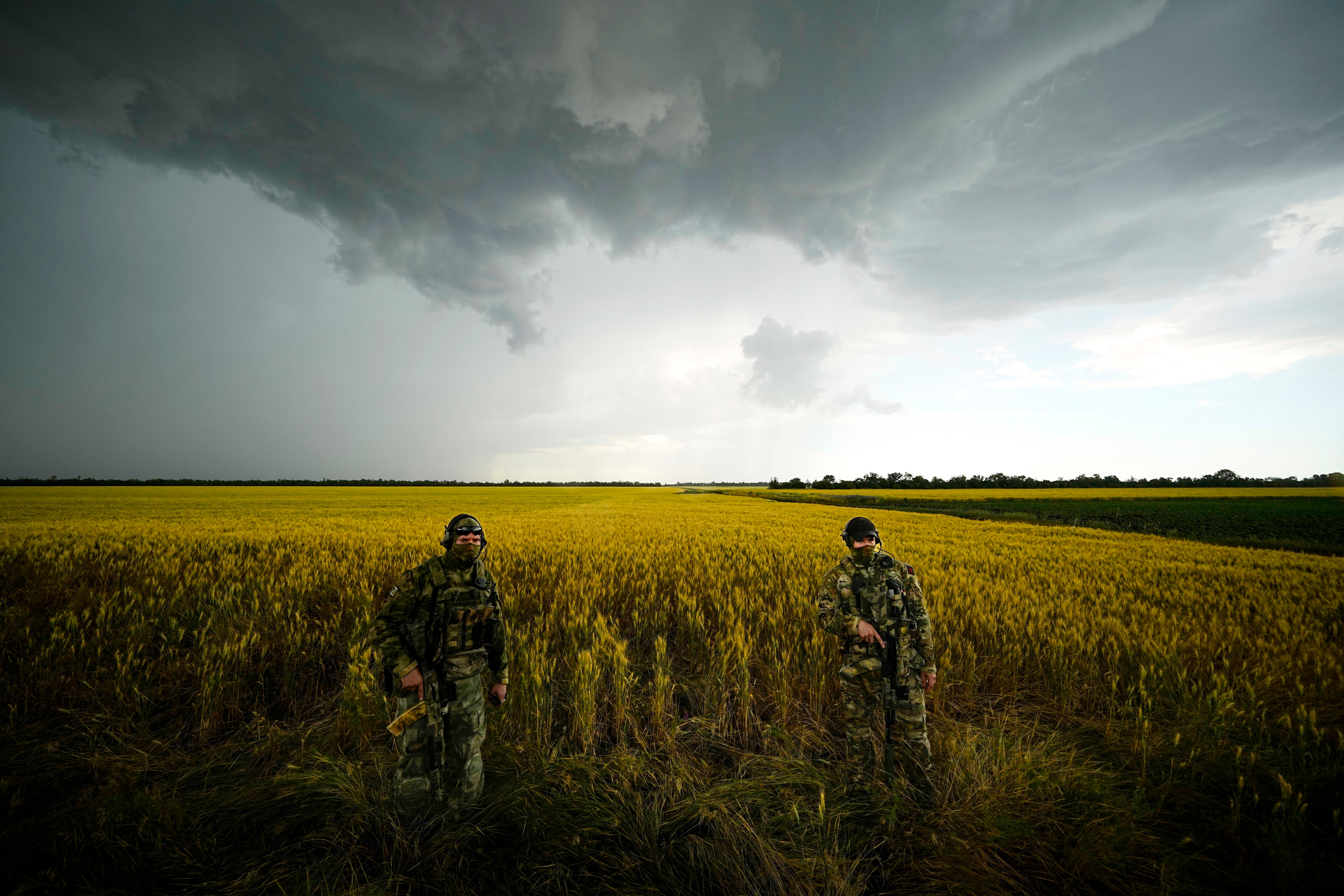The Russia-Ukraine conflict is spreading – but not how most expected
A number of smaller conflicts in the wider region, that also have their roots in the Soviet Union’s collapse, have flared up, writes Mary Dejevsky


Russia’s invasion of Ukraine triggered fears not only that it might not survive as a nation state, but that the conflict could spread. Especially in East and Central Europe, there was understandable apprehension that Russia would not stop at Ukraine, but could forge westwards to challenge the post-Cold War advance of Nato.
In the early stages of the war, the US and its European allies seemed cautious about military support for Ukraine – for fear, it was said, of provoking Russia. They acknowledged that, as a sovereign state, Ukraine was entitled to call for outside support in its defence, but there were clear divisions within the Western alliance about what form that support should take and how it should be delivered.
The Baltic States and Poland were – and remain – more assertive, partly in the belief that they could be next in Russia’s sights. While the UK acted as their cheerleader, France, Germany and the US were more reluctant. The last thing that the US, or indeed Nato itself wanted to do, was to invite Russia to treat the war as a contest with Nato. That has not, of course, prevented Russia from describing the conflict in its latter stages as a “proxy war” being waged by Nato.
And this – in technical terms at least – is what has happened. Western military support has flowed into Ukraine with almost no hostile interruption from Russia. Whether this is because Russia lacks the capability to attack those supply lines from the territory it holds, or because it fears a mistake that could trigger an Article 5 Nato response, is not entirely clear.
This – and the clear failings of the Russian military the war has exposed – may explain why the warnings about World War Three, even a nuclear war in Europe, have diminished as the war has gone on. At least for now. Ukraine (with its Western help) has proved stronger, and Russia weaker, than many had supposed.
The fact that the war has – so far – neither escalated into a European conflagration nor spread to the European members of Nato, however, does not mean it has not spread at all, or that it will not have further ramifications. It has spread – just not in the way that had mostly been envisaged.
What has been happening, largely obscured by the war in Ukraine, and the justified political and media attention it is commanding, is a resurgence of several smaller conflicts in the wider region that, like the Ukraine-Russia war, also have their roots in the Soviet Union’s collapse.
Unlike Ukraine, however, the resumption of these conflicts does not for the most part reflect any aggressive intent on Russia’s part, but rather Russia’s absence or weakness.
Of most immediate concern is a new flare-up of the conflict between Armenia and Azerbaijan over Nagorno-Karabakh, among the most bitter conflicts spawned by the end of the Soviet Union. This is also a dispute where the Russia factor is most salient. Russia brokered a ceasefire between the two sides and sent peacekeepers after what amounted to a mini-war in 2020 in which more than 6,000 people were killed. Then, Azerbaijan took – or, as Baku would claim, took back – a significant amount of territory from Armenia-held Nagorno-Karabakh.
Last month, trouble flared again, when Azerbaijan – buoyed perhaps by its new status as the new go-to country for EU energy supplies and benefiting from continued support from Turkey – responded to what it said was an incursion from Armenia-held Nagorno-Karabakh by making further advances. Tensions here seem only likely to rise, the more Russia is tied down in Ukraine and Turkey-backed Azerbaijan senses its weakness.
Staying in the Caucasus, Russian weakness has also had repercussions for the two pro-Russia enclaves in Georgia. South Ossetia had planned a referendum on joining Russia, only to cancel it in May under a new government, even as the other enclave, Abkhazia, denied any ambition to join Russia. This suggests that the enclaves – which Russia (almost alone) recognised as independent after fighting a war in 2008 to prevent their forced integration into Georgia – may now see Russia as a weaker and a less desirable protector than they did before. Or Russia is losing interest. Whatever happens next is unlikely to be a diminution of tensions.
Six weeks ago, further east, there was an outbreak of violence – several dozen killed, hundreds injured – in a region of Uzbekistan called Karakalpakstan. The violence was said to have erupted when the Uzbek government used force to end protests against proposed constitutional changes designed to reduce the region’s autonomy and end its right to secede.
The changes have now been abandoned. But some inevitably saw the distant hand of Russia behind the Karakalpakstan protests, with the clashes interpreted as the latest stage in Uzbekistan’s attempts to distance itself from the Soviet-era suzerain, and reflecting the three-way tensions between the Central Asian states that became independent after the Soviet collapse and the simmering competition for regional influence between Russia and China.
To keep up to speed with all the latest opinions and comment, sign up to our free weekly Voices Dispatches newsletter by clicking here
The bigger point is that such flare-ups tend not to be one-off incidents, but reflect changes in the regional power balance. The diversion of so much Russian attention to Ukraine could be one such moment.
Something similar might apply also to recent shooting incidents around Kosovo, where ethnic Serbs have been refusing to equip their cars with new number plates – the latest stage in Kosovo’s efforts to reinforce its standing as an independent state. Given Russia’s unstinting support for Serbia, the question might be whether Russian weakness affords Kosovo an opportunity to assert itself, with EU and Nato backing, or whether Russia might look to fish relatively cheaply in troubled waters, as Soviet-era propaganda used to say – in an effort to offset its difficulties in Ukraine.
From these disparate and often murky matters, there is a pattern emerging: a resurgence of unrest in places left contested or adrift after the Soviet Union broke up. And even a small conflict at a bigger faultline – whether in the Balkans, in the Caucasus or Central Asia – threatens wider repercussions. The collapse of the USSR is still producing spasms more than 30 years on, and whatever happens with Russia in Ukraine will not stop there.






Join our commenting forum
Join thought-provoking conversations, follow other Independent readers and see their replies
Comments